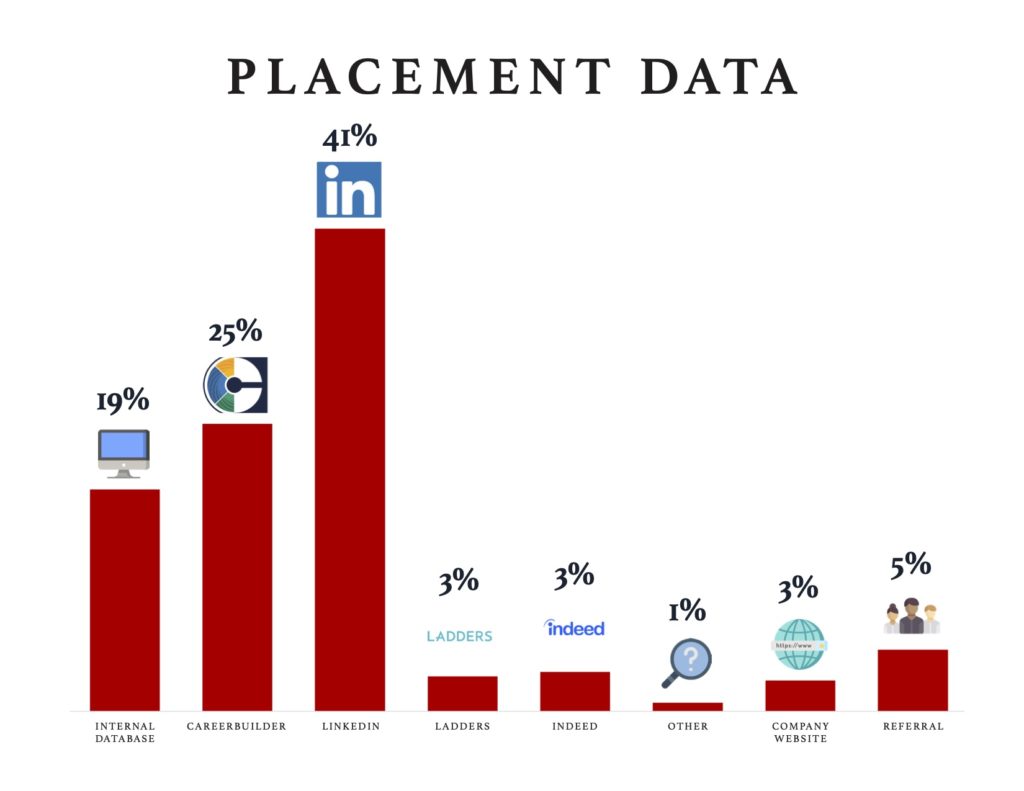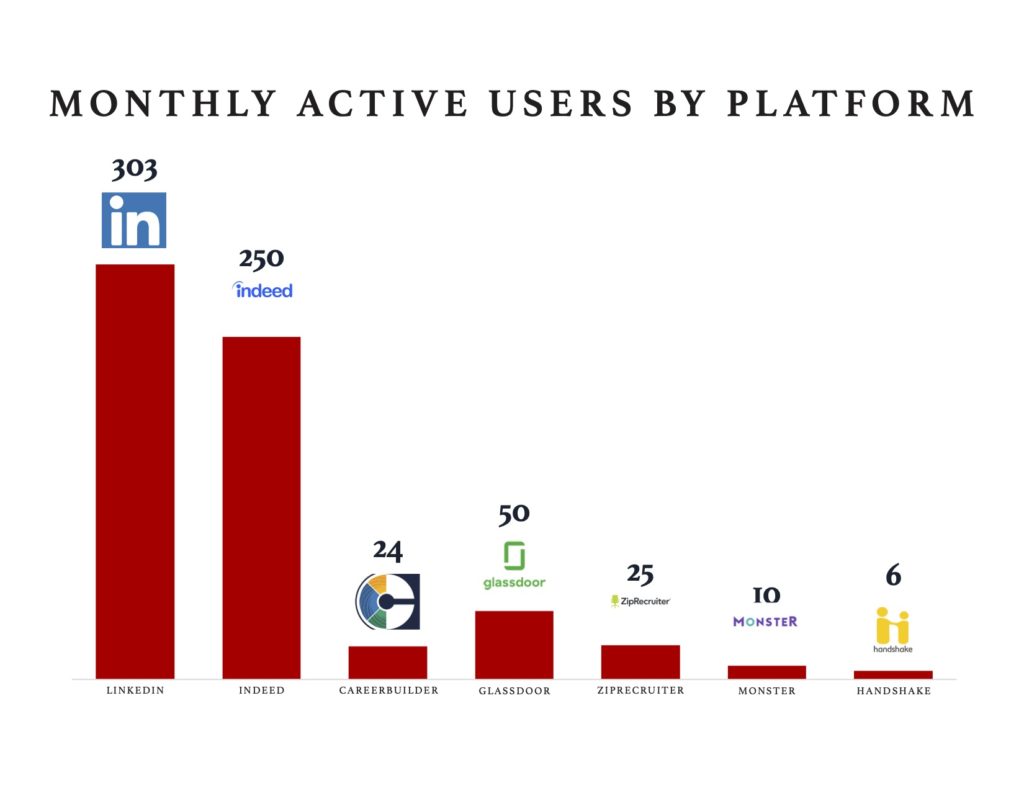It is a well-known and growing trend that more and more people are using online resources to conduct their job search, with at least 50% of job seekers saying they prefer to find jobs online. Given the uncertainty of the economy during the COVID-19 pandemic, it is more important than ever to find the right candidate for the position. With unemployment currently at 10.2% and 16.3 million unemployed as of July 2020, it’s imperative to consider where these candidates are turning to for their job search. There are a plethora of online job boards and resume databases, each with their different strengths and weaknesses. Below you will find a description of each one to help you choose which is best for your candidate sourcing needs.

In recent years, LinkedIn has emerged as the largest network for job seekers and employers to post their open jobs. With more than 675 million users, 303 million of which are active monthly, this is a resource that cannot be ignored. The ability to network with hiring managers and companies, along with the mobile-friendly platform makes LinkedIn an attractive destination for job seekers.
Indeed
Indeed boasts an impressive resume database of 175 million, along with the 250 million users who visit monthly. Considering that Indeed adds about 10 jobs per second, users have a reason to continue coming back. In addition, Indeed’s reach is nation-wide across all industries and functions.
CareerBuilder
With 150 million candidate profiles, Careerbuilder is one of the first job boards that is still utilized today. Around 330,000 of those profiles have been active in the last month in addition to the 24 million monthly visitors. Employers post around 3 million jobs on Careerbuilder each month. Similarly to Indeed, CareerBuilder offers candidate profiles and job openings from various industries and functions.
Glassdoor
Glassdoor is a major player in the job site world with 50 million monthly visitors and over 10 million job listings. The ability for job seekers, employees, and interviewees to leave company reviews makes this an attractive option for job seekers. In a recent survey, 75% of recruiters surveyed report that Glassdoor reviews are important to the hiring process.
ZipRecruiter
Approximately 30 million job seekers are reached each month by job posts through ZipRecruiter. A perk here is that jobs posted through ZipRecruiter can be found on more than 100 different job sites, attracting 25 million unique visitors to the site each month.
Monster
Monster is another job board that has been around for over 20 years. Each month Monster receives about 10 million unique visitors. Over 1 million jobs are added each month on the platform. Monster provides a great resource because it is easy to navigate and has an abundance of remote jobs, an attractive option for job seekers today.
Handshake
Handshake is a great resource for employers seeking interns or recent college graduates. Handshake has 6 million active users from over 1000 colleges and universities.
Comparisons by the numbers
While this is not an exhaustive list of job boards and resume databases, it is important to see how they stack up against each other to determine where you want to utilize your resources. Below are each of the resources compared by the number of visitors each month. It is helpful to see which resources will reach the largest share of job seekers, although most job seekers will utilize more than one resource. Of course, there are other factors to consider in addition to user volume, such as the demographic strengths of each database, level of job seeker, the types of jobs typically posted and, the costs of the service.
When looking at the pie chart above it’s easy to think posting jobs and sourcing candidates from LinkedIn and Indeed should be enough to get the job done and even 77% of recruiters report relying heavily on linked in to source candidates. However, a strong and diverse candidate pool is best achieved through a variety of resources. We recently looked at the last 4 years of candidate placements by recruiters at JMJ Phillip Executive Search. While a large portion of placements come from major players such as LinkedIn and CareerBuilder, the importance of other resources cannot be discounted. Internal databases and applications through your own website, along with your own network can be the difference between finding an acceptable candidate, and the perfect fit for your organization.


